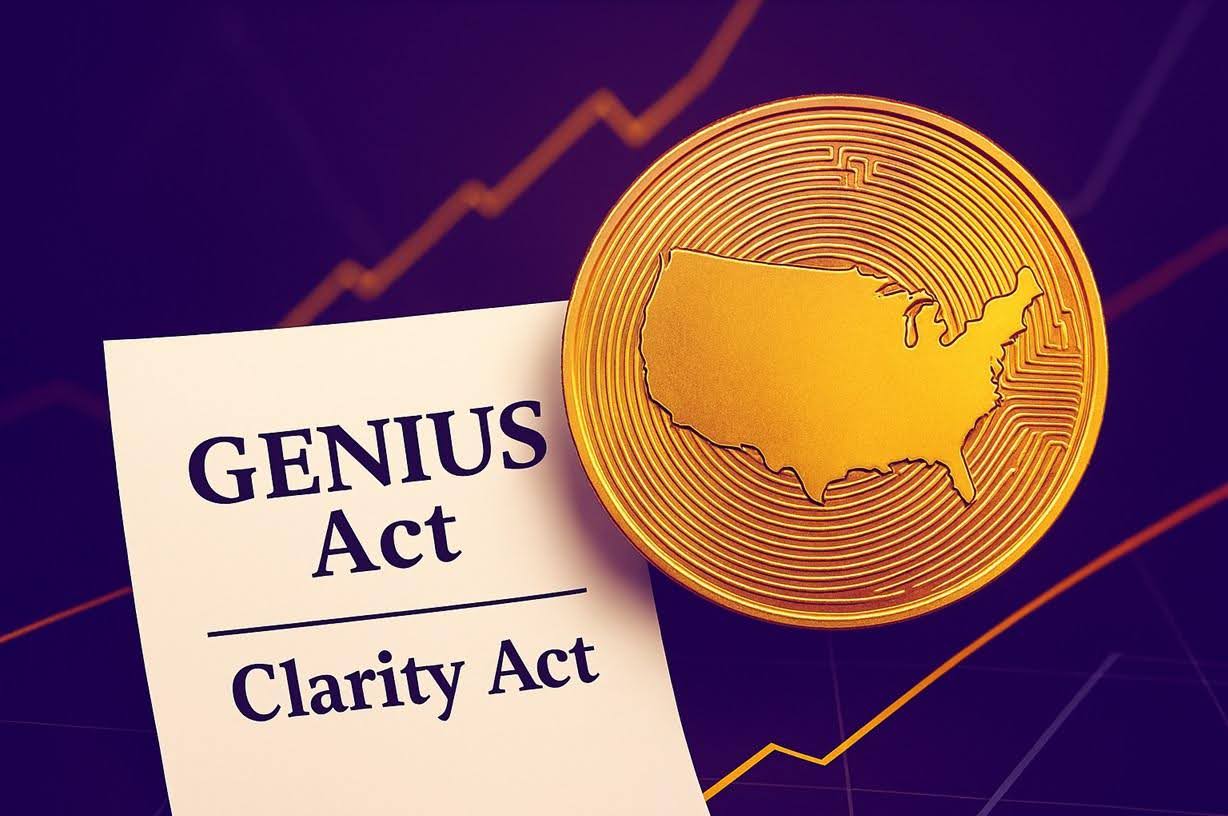Key Takeaways:
Charles Hoskinson predicts a $250,000 BTC value, pushed by new U.S. crypto laws.GENIUS and CLARITY Acts head to Home vote throughout “Crypto Week,” boosting market optimism.Institutional inflows anticipated to surge, as regulatory readability unlocks new alternatives.
As Bitcoin hovers close to historic highs, Cardano founder Charles Hoskinson is doubling down on his long-standing prediction: BTC will attain $250,000. His confidence facilities on a pivotal second in U.S. crypto coverage—the upcoming “Crypto Week,” the place two main payments, the GENIUS Stablecoin Act and the CLARITY Act, might reshape the whole digital asset panorama.
The Street to $250K: Why Now?
Hoskinson, identified for his daring market calls, took to X (previously Twitter) to sign what he calls the upcoming “gigachad bull run.” He believes that Bitcoin and altcoins are on the cusp of a serious institutional inflow, and the upcoming legislative developments might function the ultimate inexperienced gentle for capital to flood into the house.

His $250K Bitcoin projection isn’t simply speculative. It’s grounded in a number of converging catalysts:
Accelerating institutional urge for food for digital propertyRising stablecoin utility throughout conventional monetary techniquesAnticipated U.S. Federal Reserve fee cuts, probably unleashing low-cost liquidityClearer regulatory frameworks, eliminating current authorized ambiguity
With Bitcoin lately surpassing $117,000 and each day buying and selling quantity exceeding $100 billion, markets are already bracing for what may very well be a defining second in crypto historical past.


GENIUS and CLARITY: The Payments That May Change All the things


GENIUS Stablecoin Act
The Producing Uniform and Impartial Stablecoin Requirements (GENIUS) Act goals to manage the stablecoin sector—arguably the fastest-growing nook of crypto. The invoice outlines:
Issuance necessities for fiat-backed stablecoinsFederal and state oversight dutiesShopper protections and capital reserve mandates
It lately handed the Senate and now awaits a Home vote. Former U.S. President Donald Trump, at the moment looking for re-election, has expressed assist for the invoice and promised to signal it into legislation if handed.
For crypto leaders, this act is a sign of maturation within the sector—particularly in enabling institutional entities to securely undertake stablecoin expertise for funds, settlements, and cross-border transactions.
Learn Extra: GENIUS Act 2025 – All You Have to Know About This New Stablecoin Regulation
CLARITY Act: Demystifying Crypto Regulation
The Digital Asset Market Construction and Investor Safety Act, often known as the CLARITY Act, seeks to deal with a serious headache for crypto corporations: regulatory confusion. Presently, it’s unclear whether or not digital property fall underneath the jurisdiction of the U.S. Securities and Alternate Fee (SEC) or the Commodity Futures Buying and selling Fee (CFTC).
The CLARITY Act proposes:
Clear definitions of which digital property are securities vs. commoditiesStreamlined registration processes for digital asset corporationsClear pointers for token issuance and secondary buying and selling
By clearly delineating duties between regulatory companies, the invoice might take away the regulatory grey zones which have discouraged many conventional establishments from absolutely participating within the crypto market.
Learn Extra: U.S. Home Set to Scrutinize Key Crypto Invoice, the CLARITY Act
Why Institutional Traders Are Paying Consideration
For years, institutional gamers have stored crypto at arm’s size attributable to compliance dangers. However now, the promise of a well-regulated surroundings is flipping the narrative.
If each GENIUS and CLARITY Acts are handed, they might:
Supply regulatory certainty for publicly traded corporations and monetary establishmentsEncourage the launch of tokenized merchandise and crypto ETFsCut back the specter of enforcement actions from the SEC
This legislative readability might unleash trillions in sidelined capital, at the moment sitting in hedge funds, pensions, and sovereign wealth portfolios ready for authorized certainty.
Hoskinson’s outlook aligns with that of different high-profile crypto CEOs like Brian Armstrong (Coinbase) and Brad Garlinghouse (Ripple)—each of whom have spent years lobbying for federal readability.
Market Response and the Path Forward
Bitcoin’s present momentum—up 5% within the final week—is seen by many as a prelude to bigger strikes. Whereas short-term volatility stays, long-term technicals and macroeconomic traits are aligning in crypto’s favor.
A number of components assist Hoskinson’s $250K goal inside the subsequent 12–24 months:
Institutional buy-ins from main asset managersU.S. rate of interest cuts anticipated by early 2026Rising Bitcoin shortage attributable to halving cyclesInternational unrest pushing traders towards decentralized property
In line with market analysts, if Bitcoin had been to hit $250,000, it could surpass a $5 trillion market cap, rivaling corporations like Apple and Nvidia, and changing into the world’s second-largest asset after gold.
“As soon as the Fed lowers rates of interest, you’ll have loads of quick, low-cost cash, after which it’ll pour into crypto,” Hoskinson mentioned earlier this 12 months—an outlook now shared by institutional analysts at JPMorgan and Constancy.
What Does This Imply for Altcoins?
Though most trade gamers concentrate on Bitcoin, the exponential earnings that may be reaped from investing in different altcoins can solely be imagined if institutional traders transfer in. Tasks which have actual utility — significantly these that are enabling or supporting DeFi, actual world asset tokenization, and compliant stablecoins — are more likely to discover capital being accessible.
Cardano (ADA), Ethereum (ETH), Solana (SOL) and nascent Layer 1s might even see outsized features. Stablecoin ecosystems resembling USDC and FDUSD are already posturing to develop in a regulated method underneath frameworks just like the GENIUS Act.
Moreover, as federal legislators are more and more focusing their consideration on bundled blockchain innovation, the enactment of those payments could spur on federal blockchain pilot applications, which might improve the sector’s credibility much more.









